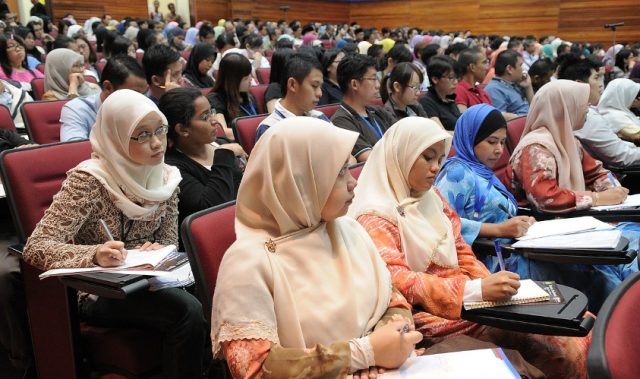
AsianScientist (Apr. 20, 2011) – Singapore’s first indigenous micro-satellite, X-SAT, lifted off on board India’s Polar Satellite Launch Vehicle PSLV-C16 at 10.12am Indian Standard Time today.
The X-SAT, developed and built by Singapore’s Nanyang Technological University (NTU) in collaboration with DSO National Laboratories, was launched from the Satish Dhawan Space Centre at Sriharikota in Andhra Pradesh, India.
The wholly made-in-Singapore satellite was one of the two “piggyback” mission satellites loaded on the PSLV-C16 rocket owned by the Indian Space Research Organisation. The PSLV-C16 successfully inserted the X-SAT into its planned orbit around the Earth.
“We are delighted with the successful launch of Singapore’s first experimental micro-satellite into space. This represents a huge leap for our local research and development endeavors in space technology and building micro-satellites,” said NTU President Dr. Su Guaning.
The NTU team members involved in the X-SAT project are currently trying to establish communication contact with the satellite from the Mission Control Station at NTU’s Research Techno Plaza. Once contact with X-SAT is established, an initial health status of the satellite will be ascertained and confirmed.
This experimental micro-satellite carries three payloads, namely an imaging system, an advanced navigation experimental set-up, and a parallel processing unit for image processing experiments.
Weighing 105 kg, the X-SAT is designed for research associated with earth remote-sensing applications. It has a mission life of three years in orbit at a height of 800 km. The mission objectives are imaging over Singapore as well as surrounding regions, and satellite-based advanced data acquisition and messaging over the Indian and Pacific Ocean.
——
Source: Nanyang Technological University.
Disclaimer: This article does not necessarily reflect the views of AsianScientist or its staff.












